|
- Catalog (in stock)
- Back-Catalog
- Mail Order
- Online Order
- Sounds
- Instruments
- Projects
- History Face
- ten years 87-97
- Review Face
- our friends
- Albis Face
- Albis - Photos
- Albis Work
- Links
- Home
- Contact
- Profil YouTube
- Overton Network
P & C December 1998
- Face Music / Albi
- last update 03-2016
|
Mongolian alphabet
The Mongolian language belongs to the Altaic language family and is spoken by approximately 5 million people in today’s Outer Mongolia, Inner Mongolia (China), Afghanistan and Russia.
There are a number of closely related varieties of Mongolian dialects: Khalkha or Halha, the national language; the Oirat, Chahar and Ordos dialect, which are spoken mainly in the Inner Mongolian Autonomous Region of China.
Other languages which are considered part of the Mongolian language family, but are different from the Mongolian language, include Buryat and Kalmyk, spoken in Russia and Moghul or Mogul, spoken in Afghanistan.
In 1208 Genghis Khan defeated the Naiman and took over their Uighur alphabet, the Tatar-Tonga script; it seems to be an adaptation of the old Uighur alphabet.
The alphabet created by Tatar-Tonga is now known as the Uighur alphabe, today’s classic Mongolian alphabet.
Between the 13th and 15th centuries, the Mongolian language was also written with Chinese characters, the Arabic alphabet and an alphabet derived from Tibet, called hPhags-pa (see more below).
As a result of pressure applied by the Soviet Union, Mongolia adopted the Latin alphabet in 1931 and the Cyrillic alphabet in 1937. Since 1994 the Mongolian people have been trying to bring back the classic Mongolian alphabet.
In the Inner Mongolian Autonomous Region of China the classic Mongolian alphabet is still used.
Classical Mongolian alphabet
|
Notable features |
|
– Type of writing system: phonemic alphabet with different letters for consonants and vowels. |
|
– Direction of writing: from the left to the right in vertical columns running from top to bottom. |
|
– Type of writing system: phonemic alphabet with different letters for consonants and vowels. |
|
Vowels
|
|
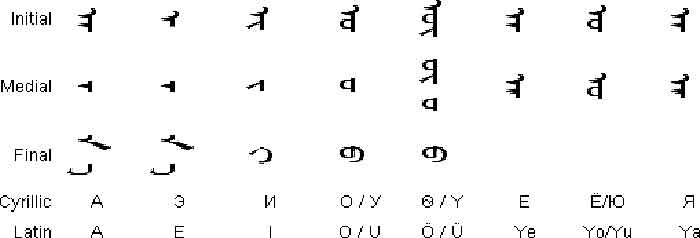 |
|
|
|
Consonants
|
|
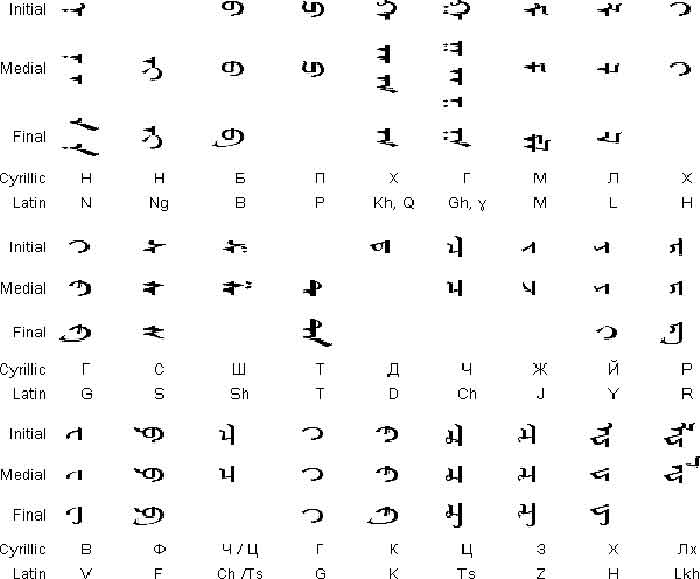 |
|
|
|
Consonant / vowel combinations |
|
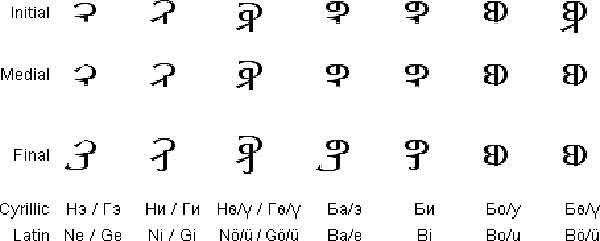 |
|
|
|
Numerals
|
|
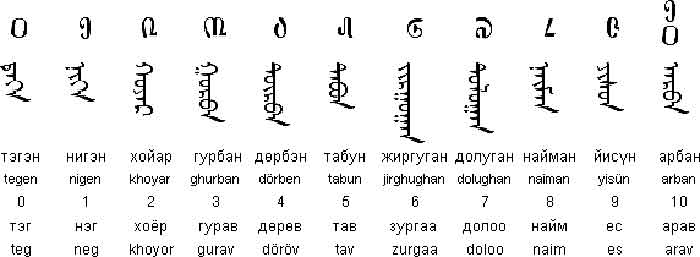 |
|
|
|
Sample text Manchu |
|
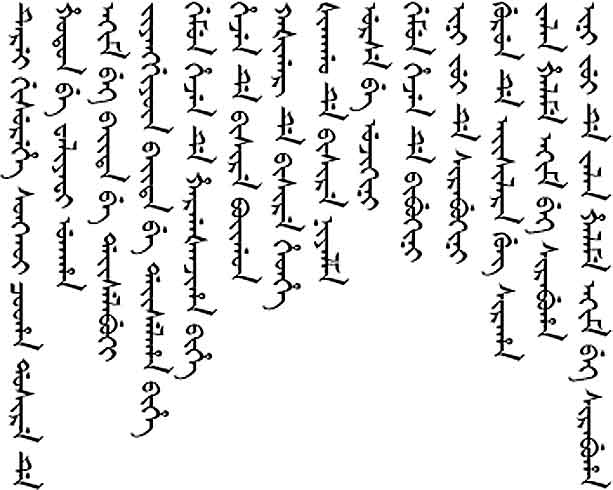 |
|
Sample text Mongolian |
|
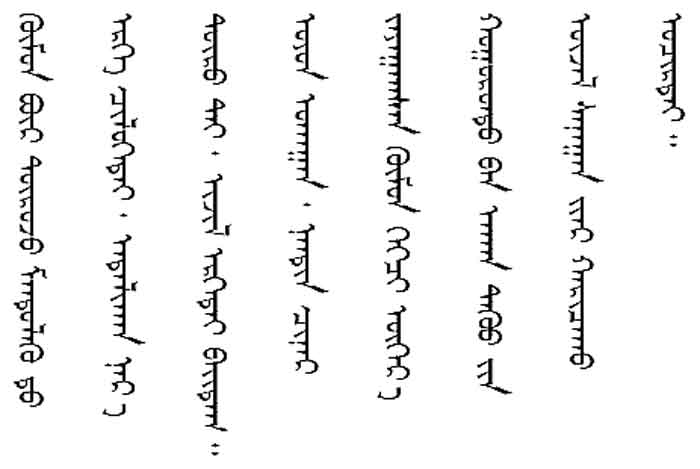 |
The Mongolians adopted the Uighur script approximately in the 12th century, but initially it did not harmonize with the Mongolian language. Spelling was ambiguous due to Uighur letters representing multiple sounds. And, as the language further developed, sounds of words changed, but the spelling remained fossilized, thus creating a difference between written and spoken language. Language reform during the 16th century AC alleviated this problem, and the resulting script is known as the Mongolian script, as shown below.
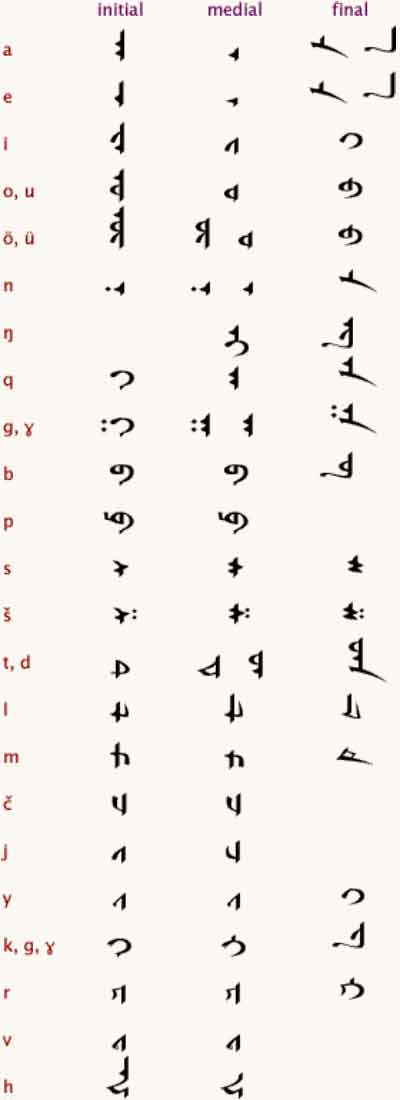
The hPhags-pa alphabet
was created under the order of Khubilai Khan, the Great Khan of the Mongols and regent of China, as an official and universal script for his vast empire that stretched from China to Russia and crossed ethnic as well as cultural borders. The script already employed to write Mongolian at that time was originally borrowed from the script used to write Uighur, a Turkic language, and did not harmonize phonetically with the Mongolian language. Therefore, in 1269 AC, the Khan commissioned his personal lama, Matidhvaja Sribhadra, also known as hPhags-pa Lama, to create an alphabet in order to replace the existing Mongolian. Since hPhags-pa Lama was Tibetan, he created a new script based on his native Tibetan alphabet, but he also borrowed some elements from the Mongolian language.
Visually, the letters of the hPhags-pa alphabet appear very rectangular; hence the origin of one of its names, dörbeljin üsüg, means "square script" in Mongolian.
A comparison with Tibetan, however, reveals that the letters are essentially more angular versions of Tibetan alphabet.
Like the Tibetan, the hPhags-pa script is a syllabic alphabet. The basic hPhags-pa letter represents a consonant plus the vowel /a/. The only exception is the letter used to write the first syllable in vowel-initial words, as it does not have an initial consonant and only denotes the single sound /a/.
|
The following chart illustrates the basic letters in the hPhags-pa script. |
|
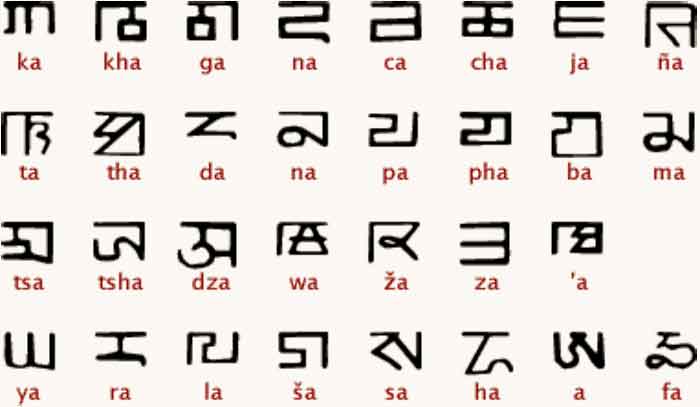 |
|
|
|
In order to write a syllable with a vowel other than /a/, an extra sign is inserted after the basic sign. The following are the vowel markers. |
|
 |
|
However, as the vowel markers were directly borrowed from Tibetan, they lacked two sounds found in Mongolian, namely /ö/ and /ü/. In order to represent these sounds, two vowel markers are used. The sound /ö/ is written as eo, and /ü/ is written as eu. |
|
Another characteristic borrowed from the Mongolian alphabet is that the hPhags-pa alphabet is written in vertical columns, which are read from the left to the right. |
|
December 2010 – Albi
|
PageTop

|
|
